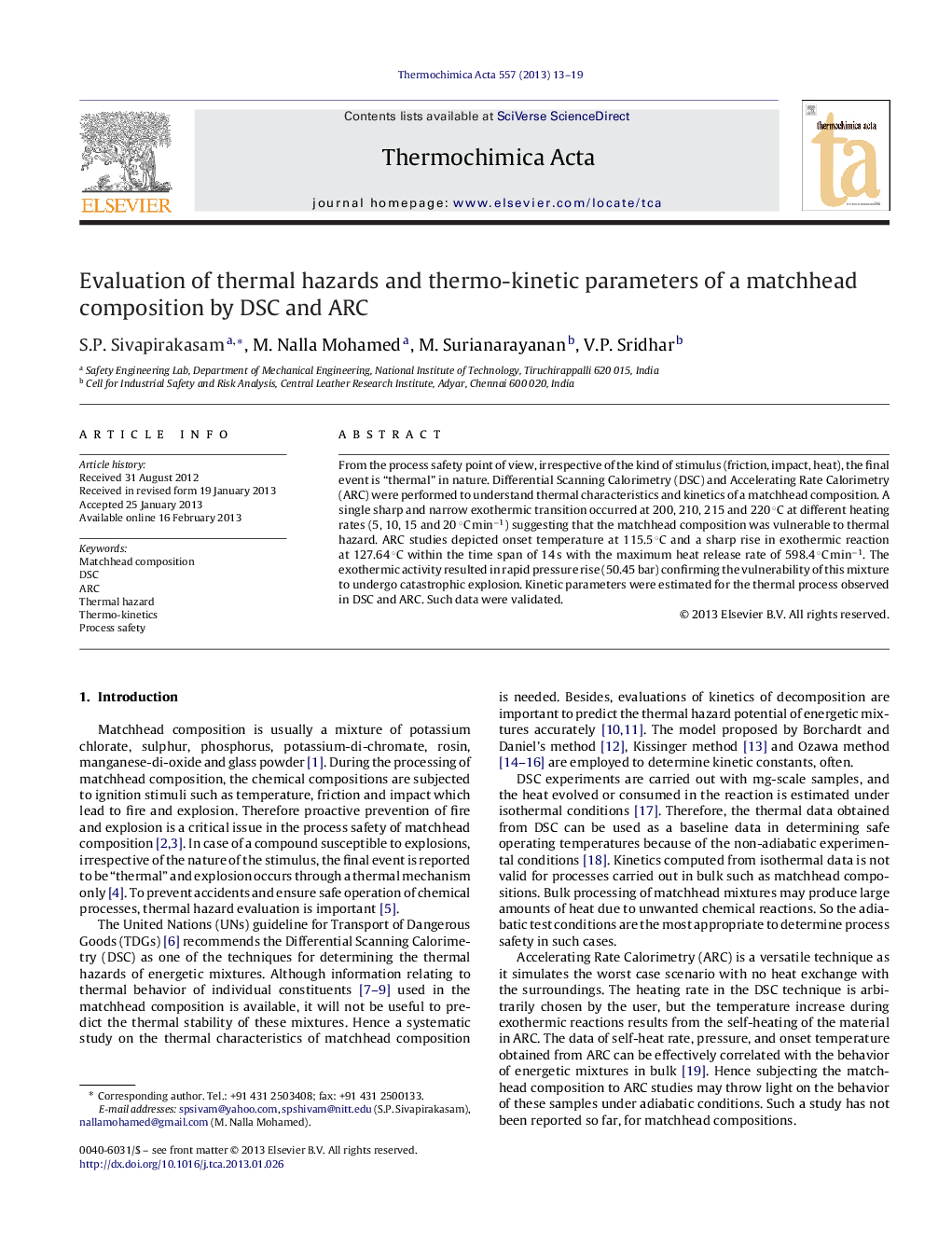| کد مقاله | کد نشریه | سال انتشار | مقاله انگلیسی | نسخه تمام متن |
|---|---|---|---|---|
| 673926 | 1459527 | 2013 | 7 صفحه PDF | دانلود رایگان |

From the process safety point of view, irrespective of the kind of stimulus (friction, impact, heat), the final event is “thermal” in nature. Differential Scanning Calorimetry (DSC) and Accelerating Rate Calorimetry (ARC) were performed to understand thermal characteristics and kinetics of a matchhead composition. A single sharp and narrow exothermic transition occurred at 200, 210, 215 and 220 °C at different heating rates (5, 10, 15 and 20 °C min−1) suggesting that the matchhead composition was vulnerable to thermal hazard. ARC studies depicted onset temperature at 115.5 °C and a sharp rise in exothermic reaction at 127.64 °C within the time span of 14 s with the maximum heat release rate of 598.4 °C min−1. The exothermic activity resulted in rapid pressure rise (50.45 bar) confirming the vulnerability of this mixture to undergo catastrophic explosion. Kinetic parameters were estimated for the thermal process observed in DSC and ARC. Such data were validated.
► Fire/explosions are undesirable events in-process safety of matchhead composition.
► DSC and ARC were used to analyze the thermal decomposition of a matchhead composition.
► ARC studies evidence of onset of exothermic activity at 115.5 °C.
► Reactive potential was compared under adiabatic and isothermal conditions.
► Kinetic parameters were estimated for the thermal process observed in DSC and ARC.
Journal: Thermochimica Acta - Volume 557, 10 April 2013, Pages 13–19